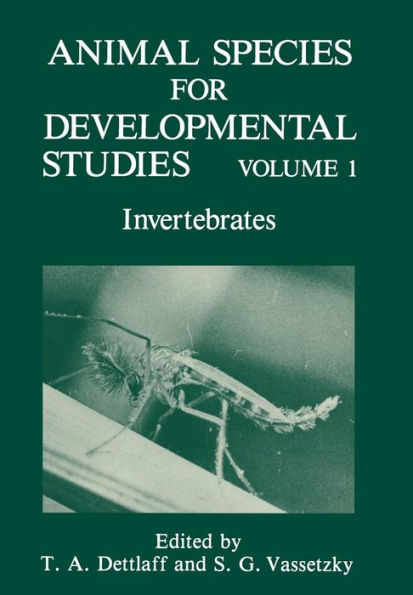Animal Species for Developmental Studies: Volume 1 Invertebrates
This volume comprises normal tables (description of normal development) for protozoa and invertebrates widely used in developmental biology studies. The species chosen reflect their advantages for laboratory studies, the information avail able, and their availability for experimentation. Chapter 11, which contains the normal tables for the starfish Asterina pectinifera, was written specially for this edi tion, which is the invertebrate section of the revised and augmented translation of Ob"ekty Biologii Razvitiya published in Russian in 1975 as a volume in the series of monographs Problemy Biologii Razyitiya (Problems of Developmental Biology) by Nauka Publishers, Moscow. The description of every species is preceded by an introduction in which the advantages of working with the particular animal are stated and the problems stud ied (with the main references) are outlined. Data are also provided on its taxonomic status and distribution of the animal, and conditions of keeping the adult animals in laboratory. Methods of obtaining gametes, methods of artificial fertilization, methods of rearing embryos and larvae, and tables of normal development are also given.
1117268687
Animal Species for Developmental Studies: Volume 1 Invertebrates
This volume comprises normal tables (description of normal development) for protozoa and invertebrates widely used in developmental biology studies. The species chosen reflect their advantages for laboratory studies, the information avail able, and their availability for experimentation. Chapter 11, which contains the normal tables for the starfish Asterina pectinifera, was written specially for this edi tion, which is the invertebrate section of the revised and augmented translation of Ob"ekty Biologii Razvitiya published in Russian in 1975 as a volume in the series of monographs Problemy Biologii Razyitiya (Problems of Developmental Biology) by Nauka Publishers, Moscow. The description of every species is preceded by an introduction in which the advantages of working with the particular animal are stated and the problems stud ied (with the main references) are outlined. Data are also provided on its taxonomic status and distribution of the animal, and conditions of keeping the adult animals in laboratory. Methods of obtaining gametes, methods of artificial fertilization, methods of rearing embryos and larvae, and tables of normal development are also given.
54.99
In Stock
5
1

Animal Species for Developmental Studies: Volume 1 Invertebrates
336
Animal Species for Developmental Studies: Volume 1 Invertebrates
336Paperback(Softcover reprint of the original 1st ed. 1990)
$54.99
54.99
In Stock

Product Details
| ISBN-13: | 9781461278399 |
|---|---|
| Publisher: | Springer US |
| Publication date: | 12/06/2011 |
| Edition description: | Softcover reprint of the original 1st ed. 1990 |
| Pages: | 336 |
| Product dimensions: | 6.69(w) x 9.61(h) x 0.03(d) |
From the B&N Reads Blog
